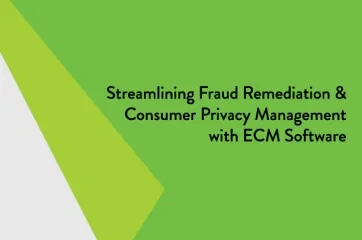Early Capture
In banking, the term “early capture” describes situations in which documents are gathered into a standardized format sooner than typically required. Early capture often implies the need to digitize paper files (via scanning or other means) or reorganize already digitized documents.
Capturing commercial loan documents prior to booking is a common practice, but early capture could also be applied to other use cases. For example, a financial institution may digitize a vendor’s proposals, training materials, and other documentation prior to issuing a purchase order.
Methods of Early Capture
Depending on the financial institution’s technology stack and business processes, it may choose to leverage a variety of document capture techniques. Examples include:
- Barcode scanning
- Bulk scanning
- File upload
- Drag and drop
- Virtual printers
Early Capture in Commercial Lending
Commercial loans sometimes take months to close. During that time, the financial institution must collect considerable amounts of documentation from the customer or member. Profit and loss statements, tax returns, entity documents, loan applications, and collateral information are examples. Hundreds of pages of paper may be involved if a borrower submits hard copy records. Retaining such documentation exclusively in paper format limits accessibility for credit and loan staff and may lead to loan routing challenges.
Efficiently capturing documents throughout the lending process can help a financial institution overcome operational bottlenecks while streamlining access for lenders, loan admins, lending assistants, credit staff, and senior management. In addition, each document that is captured represents one less document that must be imaged in the future, helping offset the risk of unnecessary exceptions.
Document Storage and Early Capture
Some banks and credit unions capture documents and store them in a general repository, such as a network drive. Organizing documents in a person-centric ECM, such as AccuAccount or FASTdocs, can increase the impact of early capture. With AccuApproval, Alogent’s commercial loan routing solution for AccuAccount, staff can easily capture, organize, and manage documentation for pending loans. Employees with proper permission can view loan applications, borrower documentation, and other details without searching through paper files. Electronic loan file routing adds additional efficiency.
Visit Alogent’s Innovation Hub for on-demand webinars containing content and information management tips.














